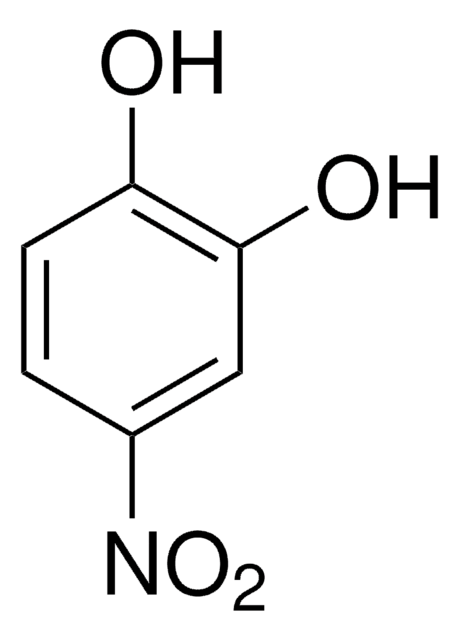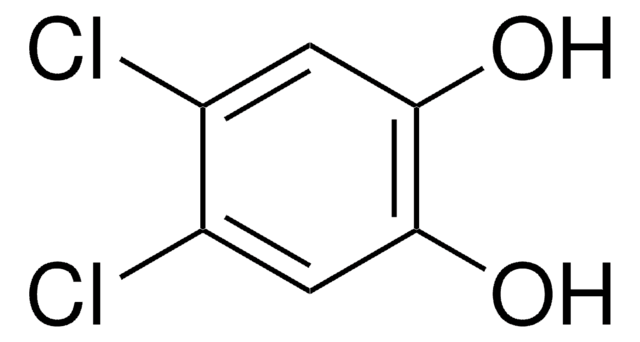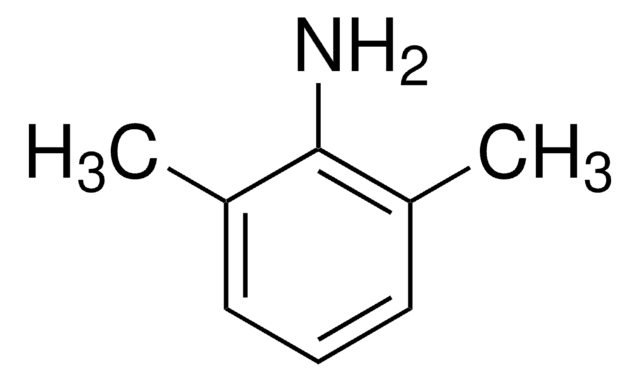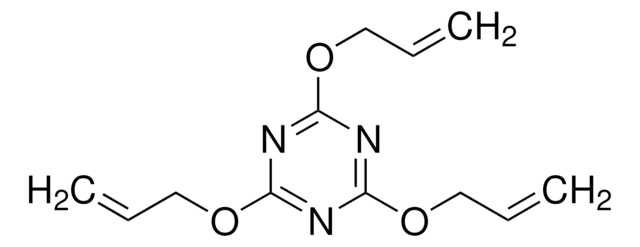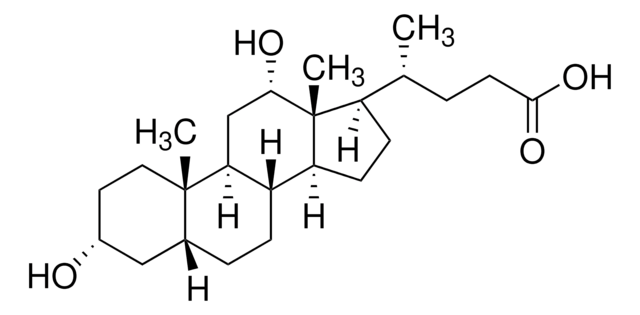D131
3,5-Dinitrocatechol
solid
Sinónimos:
3,5-Dinitro-1,2-benzenediol, OR-486
About This Item
Productos recomendados
origen biológico
synthetic (organic)
Ensayo
≥98% (HPLC)
Formulario
solid
color
yellow
mp
168-170 °C
solubilidad
H2O: slightly soluble 0.17 mg/mL
45% (w/v) aq 2-hydroxypropyl-β-cyclodextrin: 2.8 mg/mL
0.1 M HCl: slightly soluble
DMSO: soluble
aqueous buffer pH > 5: soluble
ethanol: soluble
temp. de almacenamiento
2-8°C
cadena SMILES
Oc1cc(cc(c1O)[N+]([O-])=O)[N+]([O-])=O
InChI
1S/C6H4N2O6/c9-5-2-3(7(11)12)1-4(6(5)10)8(13)14/h1-2,9-10H
Clave InChI
VDCDWNDTNSWDFJ-UHFFFAOYSA-N
Información sobre el gen
human ... COMT(1312)
Categorías relacionadas
Aplicación
Acciones bioquímicas o fisiológicas
Calidad
Precaución
Código de clase de almacenamiento
11 - Combustible Solids
Clase de riesgo para el agua (WGK)
WGK 3
Punto de inflamabilidad (°F)
Not applicable
Punto de inflamabilidad (°C)
Not applicable
Equipo de protección personal
Eyeshields, Gloves, type N95 (US)
Elija entre una de las versiones más recientes:
¿Ya tiene este producto?
Encuentre la documentación para los productos que ha comprado recientemente en la Biblioteca de documentos.
Nuestro equipo de científicos tiene experiencia en todas las áreas de investigación: Ciencias de la vida, Ciencia de los materiales, Síntesis química, Cromatografía, Analítica y muchas otras.
Póngase en contacto con el Servicio técnico